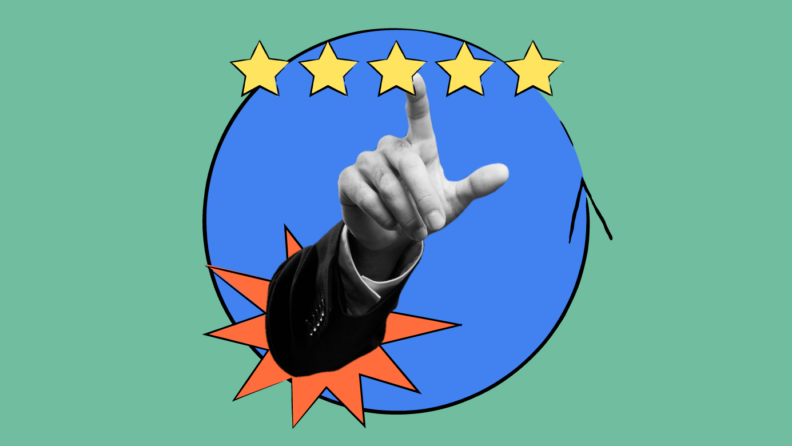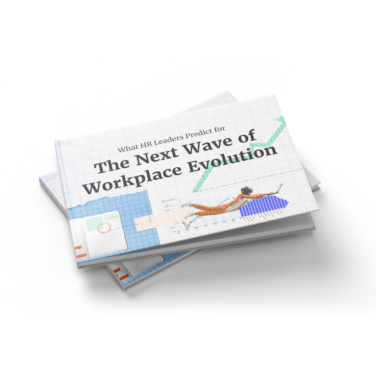In an era where dynamic workplace demands are redefining employee evaluation, continuous performance management (CPM) has emerged as a progressive alternative to traditional performance management systems.
This article delves into how CPM can revolutionize performance management in your org and push team members to greater heights.
Key takeaways:
- CPM contrasts sharply with the annual appraisal model, paving the way for more engaged, adaptive, and productive work environments.
- Key benefits of CPM include enhanced employee engagement, better feedback, improved goal alignment, increased agility, and stronger manager-employee relationships.
- To work, CPM requires real-time feedback, regular communication, and modern performance management software.
What Is Continuous Performance Management?
Continuous performance management (CPM) is a modern approach to employee appraisal and development that focuses on ongoing communication and feedback between managers and employees.
It’s a departure from traditional performance management systems, which often rely on annual performance reviews, toward a system of ongoing, regular feedback that’s instructive, constructive, and celebratory.
CPM promotes frequent check-ins, real-time feedback, and goal adjustments to keep employees aligned and motivated throughout the year.
Here’s a breakdown of what CPM typically includes:
- Regular check-ins: Managers and employees meet regularly—often monthly to discuss progress, address challenges, and set short-term goals. These check-ins help keep employees focused, motivated, and on track to meet both short- and long-term objectives.
- Ongoing feedback: CPM encourages feedback in real-time or as close to events as possible. This can include feedback from managers, peers, and even customers (360-degree feedback).
- Frequent goal setting and adjustments: Goals in CPM are more flexible; they’re updated as projects evolve or business priorities shift. This agility allows employees to stay aligned with changing company objectives and focus on what matters most.
- Focus on development: With continuous monitoring and feedback, there’s a stronger emphasis on employee growth and skill-building. Managers can identify development needs earlier, offer resources, and track progress on a more frequent basis, making development a core part of the performance process.
- Employee self-assessment and reflection: Many CPM models encourage employees to reflect on their performance and progress regularly. This self-assessment fosters ownership of their development and a clearer understanding of their achievements and areas for growth.
Continuous Performance Management Benefits?

The above performance management stat tells us that the vast majority of employees recognize that feedback helps to improve employee performance.
People crave regular feedback, and it’s important for growth and development. Continuous performance management means people get the feedback they need. For something like retail performance management, this has incredible benefits.
Related to this, the numerous benefits of CPM include:
- Enhanced employee engagement: Regular feedback and discussions ensure that employees feel heard and valued. This ongoing engagement helps boost morale and job satisfaction. A State of Continuous Performance Management study from Betterworks found that CPM increased employee engagement by 58% in some organizations.
- Increased retention: The Betterworks study also found that CPM helped organizations to retain top talent at 63% vs 41%.
- Real-time feedback and development: CPM allows for immediate feedback, enabling employees to adjust and improve quickly.
- Fosters a culture of continuous learning and development. When feedback is shared freely and regularly, learning and development will permeate through the culture.
- Improved communication: Continuous dialogue between managers and employees enhances transparency without the need for team monitoring tools.
- Better goal alignment: With CPM, goals can be reviewed and adjusted regularly. This ensures that individual goals are always aligned with the changing needs and key objectives of HR and the organization.
- Increased flexibility and agility: The dynamic nature of CPM allows for quick responses to changes in the business environment. For example, the Betterworks study found that organizations practicing CPM are 47% more effective at adapting to changes.
- Faster problem identification and resolution: Regular check-ins help identify issues early, allowing for quicker interventions to resolve problems before they escalate.
- Recognition of achievements: Continuous performance management provides opportunities for acknowledging and celebrating achievements.
- Enhanced productivity: With clear, regularly updated goals and consistent feedback, employees are more likely to stay focused and productive.
- Reduced stress and anxiety: The traditional annual review process can be stressful for employees. CPM's frequent interactions reduce the pressure and anxiety associated with performance evaluations.
- Stronger manager-employee relationships: Regular interactions help build stronger, more trusting relationships between managers and their teams.
- Data-driven decisions: Ongoing tracking of performance provides a wealth of data that can be used for making informed decisions about training needs, promotions, and other HR-related actions. In a study of CPM in 27 organizations, 91% reported better data for making people-related decisions, which helps reduce bias and improves the quality of managerial choices about employee development and rewards.
- Facilitates personalized employee growth: CPM allows managers to tailor development plans to the individual needs and career aspirations of each employee.
Handling difficult employee behavior is better managed with continuous performance management, fostering real-time performance management solutions.
All the evidence suggests that adopting continuous performance management can significantly impact business performance and improve the bottom line, which makes sense.
How To Get Started With Continuous Performance Management
Companies like Accenture are already ditching annual reviews and looking forward.
Implementing continuous performance management in an organization requires a strategic approach, commitment from leadership, and a shift in organizational culture.
Leveraging employee evaluation systems can make performance management techniques more structured and measurable.
Get leadership buy-in
Ensure that the leadership team understands and supports the shift to a continuous performance management cycle. Their commitment is crucial for driving the change across the organization.
Define objectives and framework
Clearly define what you aim to achieve with CPM. Establish a framework that outlines how often performance reviews will occur, the format of feedback, and the process for setting and revising goals.
Train managers and employees
Educate managers and employees about the principles of continuous performance management. Training should cover how to give and receive feedback effectively, set realistic and dynamic goals, and conduct productive check-ins.
Establish regular check-ins
Ensure managers schedule regular one-on-one meetings between them and their direct reports. These should be structured to discuss progress, address challenges, and review short-term and long-term goals.
Nurture a feedback culture
Nurture a culture where feedback is frequent, constructive, and a regular part of daily work. This should include both positive reinforcement and constructive criticism.
Adopting performance success strategies includes continuous feedback loops that drive ongoing employee development.
Use technology to facilitate CPM
Adopt technology platforms that support continuous performance management. These tools, such as goal setting software, can help track goals, provide real-time feedback, and document discussions and progress.
Tools that use AI in performance reviews are proliferating and will only get better with time. Implementing it in your performance management process can help create the continuous performance management culture you're seeking.
Shift to short, more dynamic goals
Where possible, shift from static annual goals to more dynamic, short-term objectives that can adapt to changing business needs.
Ensure that these goals are aligned with the organization's overall strategy using the cascading goals method.
Case Studies: How Continuous Performance Management Can Improve Alignment, Retention, And Engagement
Still doubtful that CPM can benefit your organization? Here are some real-world examples of CPM helping to transform organizations.
How Adobe’s switch to regular check-ins boosted employee engagement
Overview: Adobe realized its performance management system was ineffectual and consumed about 80,000 management hours each year.
Key Strategies:
- Replaced annual performance appraisals with regular one-on-one check-ins and frequent feedback.
- Abolished forced ranking and performance ratings and refocused to how well employees meet their goals.
Outcome: There was a marked increase in employee engagement and a 30% decrease in voluntary turnover since the introduction of the check-ins, indicating enhanced productivity and a more motivated workforce.
How Fossil Group’s switch to regular performance reviews improved alignment
Overview: During their switch to a new digital performance management system, Fossil Group noticed a misalignment between individual and organizational goals.
Key Strategies:
- Scheduled ongoing performance conversations and continuous feedback.
- Created intuitive goal conversation templates.
- Used recognition to keep performance conversations fresh.
Outcome: 92% of employees participated in goal-setting reviews, setting an average of six goals per employee, indicating a more engaged and aligned workforce.
Continuous Performance Management Best Practices
CPM will require some adaptation. Here are some best practices to ensure an effective CPM system
Regular and consistent check-ins
These should be consistent in terms of frequency and format, creating a reliable structure for ongoing dialogue.
Clear goal setting
Establish clear, measurable, and achievable performance goals for managers aligned with the organization's objectives and adaptable to changing circumstances.
Objectives and key results (OKRs) is a framework I’ve been using for years. I like it because it provides a tactical and metrics-driven set of goals that we’re all working toward.
In any case, good performance review goal setting is very helpful at the end of a quarter, half, or year for an employee's performance appraisal.
Create psychological safety
Open and honest feedback is dependent on an environment where employees feel comfortable sharing their thoughts and feedback.
Psychological safety means creating an environment in which all employees feel comfortable to offer feedback and contribute ideas.
Provide training for managers and employees
Provide training on how to give and receive feedback effectively, set goals, coach, and use any technology tools involved in the process.
You can also use these useful performance review phrases to help.
Utilize technology
Implement user-friendly technology solutions like OKR software to facilitate goal tracking, feedback, and record-keeping.
PMP's shortlist fo the best performance management software is a good place to start.
Incorporate recognition and rewards
Acknowledging achievements, behaviors, and milestones goes a long way to boosting employee motivation and engagement.
Employee recognition platforms are useful tools for helping to automate this.
Get Started With Continuous Performance Management
As author Zig Ziglar once said, “The only thing worse than training employees and losing them is to not train them and keep them.”
If you only do an annual appraisal of your team once or twice a year, consider how you can track performance more regularly. At the very least, review the performance appraisal training that managers receive to ensure you're getting the most out of reviews.
And if you can continuously do that, you can coach, give feedback, and manage performance continuously.
It’s not an easy change but it’s the most effective thing you can do as a people leader right now.
For further inspo, take a read of some of these performance management trends.




